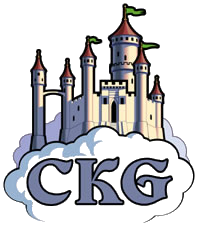Ads by Google
Here at Cloud Kingdom we often hear from educators who use our riddles in their classrooms. Getting the kids to
think "outside the box" is one of the most common reasons,
while using the riddles as a kind of jumpstart - something to help get their thoughts in gear - is another.
Choosing the right riddle to use will depend on your students, of course.
Many of our riddles are written with allusions or metaphors that may not make any sense to a sixth grader,
but which are fine for a high school senior.
What you'll find in our riddles is a mix of:
- Word games. Puns, double meanings and clever uses of homonyms to mislead the reader.
- Metaphors. We often describe something obliquely so that the description is accurate, yet unexpected.
- Multiple definitions. We'll often take a single word and write a poem where each line or pair of lines is keyed to a different definition of the word.
All of these work well for stretching students' vocabulary, problem solving and lateral thinking.
We've started collecting some of these ideas to help you, the educator, use riddles in the classroom.
Four of our Cloud Kingdom RiddleMasters are teachers and we've collected their ideas in a few articles.
Our current articles:
- Riddles in a math class (high school)
- Riddles in a math class (community college)
- Teach poetry with riddles
- Using Riddle Rooms in a math class
- Using riddles in a classroom
Are you looking for more ways to use riddles in your class setting?
Here is our list of all our articles on riddles in the classroom.
Check out Cloud Kingdom's sourcebook, Riddles in a Language Arts Classroom , available on Amazon.
Check out Cloud Kingdom's sourcebook, Riddles in a Language Arts Classroom , available on Amazon.



